Fitters and Welders: The Backbone of Fabrication
Walk into any busy fabrication shop, and you’ll see sparks flying, steel being hoisted, and two key roles working in sync to bring projects to life: fitters and welders. While the two trades often overlap and collaborate closely, their responsibilities are quite distinct.
At Sawyer Fabrication, we depend on both fitters and welders to get the job done right—especially when tackling complex builds like water clarifiers, pressure vessels, and structural skids. If you’re new to the industry or just curious about how these roles differ, here’s a breakdown of each position and how they work together in a fab shop setting.
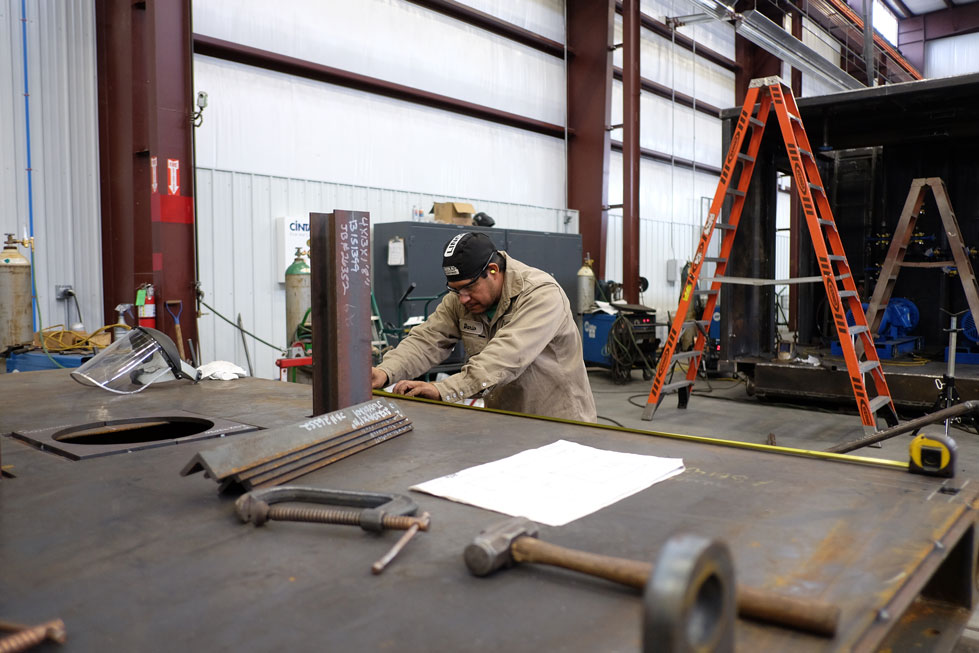
What Does a Fitter Do in a Fab Shop?
A fitter in a fabrication environment plays a critical role in the structural and dimensional integrity of each build. Fitters are responsible for the precise layout, preparation, and assembly of metal components in accordance with fabrication drawings, isometric schematics, and project specifications. Their work involves interpreting detailed blueprints, performing complex layout calculations, and using a range of precision tools to ensure proper orientation, alignment, and fit-up of materials. Whether working with structural steel, pressure-rated pipe, or custom-fabricated assemblies, fitters must account for tolerances, weld shrinkage, and support requirements. At Sawyer Fabrication, our fitters are highly skilled in both welding and fit-up for code-certified welds, providing the foundational accuracy to ensure each joint is completed to exact standards.

Test fit of a bottom shell course on an API 620 knock down tank.
Typical fitter tasks include:
- Interpreting complex fabrication drawings and isometric blueprints to determine dimensions, tolerances, and assembly sequences
- Laying out structural components with high precision using combination squares, laser alignment tools, and calibrated measuring instruments
- Executing precise fit-up of structural steel, piping, and plate assemblies using hydraulic or mechanical positioning systems, jigs, and custom fixtures
- Tack welding components in position in accordance with code-compliant procedures to maintain structural integrity during final weld-out
- Verifying dimensional accuracy and fit-up alignment using optical levels, dial indicators, gap gauges, and laser tracking systems
Fitters must understand tolerances, fit-up procedures, and how to interpret fabrication drawings. They’re often responsible for making sure everything lines up exactly as engineered before the welder ever strikes an arc.
What Does a Welder Do in a Fab Shop?
A welder in a fabrication environment is responsible for executing high-quality welds that meet strict engineering specifications and code requirements. At Sawyer Fabrication, our welders are highly trained professionals with expertise in multiple welding processes and a deep understanding of industry standards, including ASME, AWS, and API codes. They follow detailed Welding Procedure Specifications (WPS) for each project to ensure consistency, strength, and compliance. From structural steel to pressure vessels, our welders must maintain precise control over penetration, heat input, distortion management, and weld sequencing—all while producing clean, certifiable welds. Although they often collaborate with fitters during initial assembly and may tack parts into place, their core responsibility lies in the final joining process, where integrity and precision are paramount.



Welder responsibilities include:
- Executing welds using techniques like MIG, TIG, FCAW, or stick
- Following welding procedures to meet ASME, AWS, or customer specs
- Performing visual and mechanical inspections to ensure weld integrity
- Cleaning and prepping joints for best results
- Documenting welds for traceability and quality assurance
- Working closely with fitters to ensure a smooth workflow
A good welder in a fab shop doesn’t just run beads—they understand heat input, distortion, and weld sequencing to help maintain structural integrity.
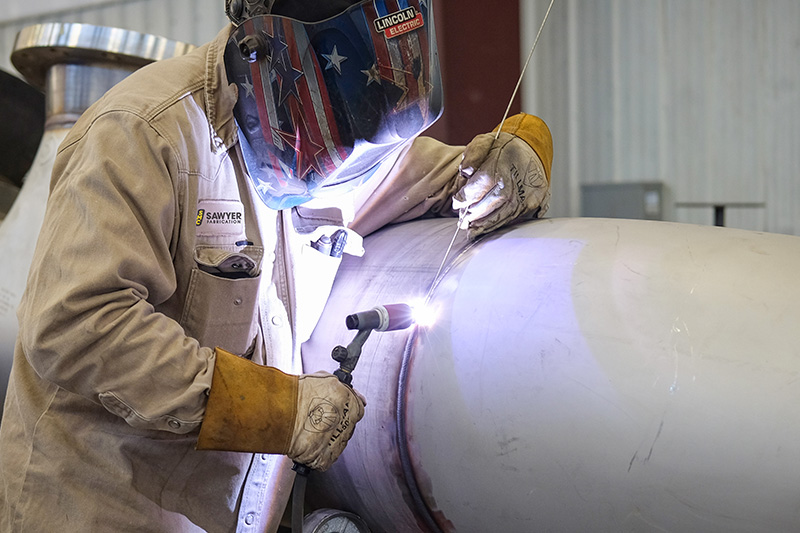
Key Differences Between Fitters and Welders in Fabrication
| Category | Fitter | Welder |
|---|---|---|
| Primary Role | Layout, measurement, and Layout, preparation, and precise assembly of structural and piping components prior to weld-out | Joining materials through welding |
| Skills Needed | Requires advanced mechanical aptitude, spatial reasoning, and deep understanding of structural design and tolerances. Blueprint reading, layout math, structural alignment | Requires strong hand-eye coordination, weld process control, and consistency under varying conditions |
| Stage in Process | Before welding – prepares and aligns components | After fit-up – permanently joins components |
| Focus | Ensuring structural accuracy, proper alignment, and readiness for welding | Delivering sound, code-compliant welds with attention to penetration, fusion, and appearance |
Why Both Roles Matter
Neither role works in isolation. A perfect fit-up makes a welder’s job easier and results in cleaner, stronger welds. A great weld holds the fitter’s layout together permanently. In many fab shops, these professionals tag team their way through an entire project, communicating constantly and double-checking each other’s work.
At Sawyer Fabrication, this collaboration is key to delivering high-quality, American-made fabrications that meet or exceed code requirements and customer expectations.
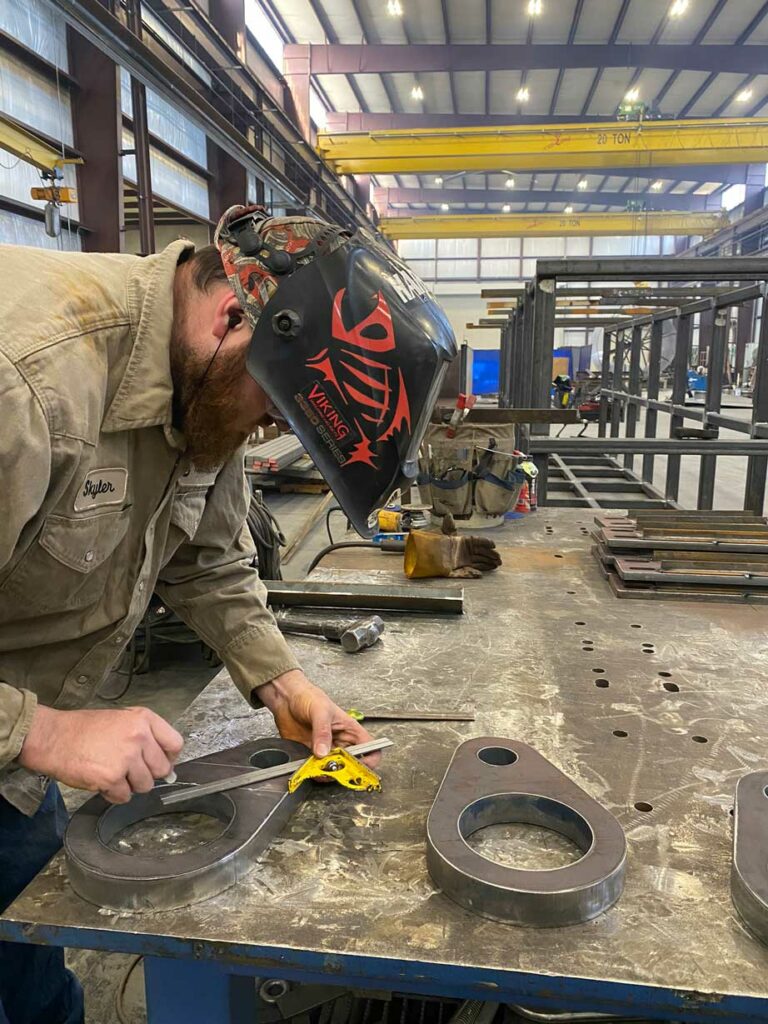
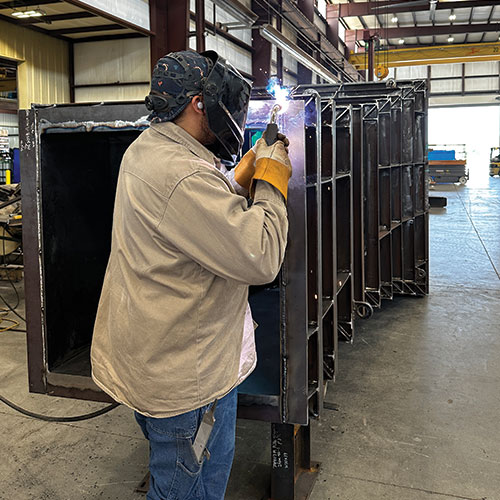
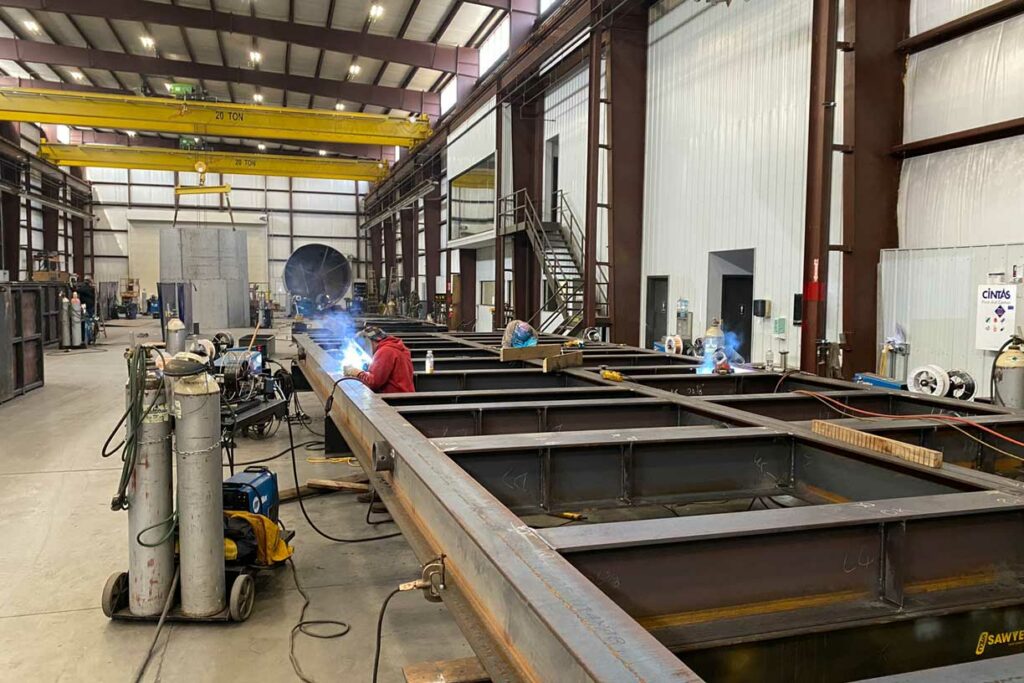
Careers at Sawyer Fabrication
We’re always looking for skilled fitters and welders who take pride in their craft. Whether you specialize in structural steel, pressure vessels, or piping systems, there’s a place for you on our floor. If you’re experienced and ready to tackle challenging builds, we’d love to hear from you.
